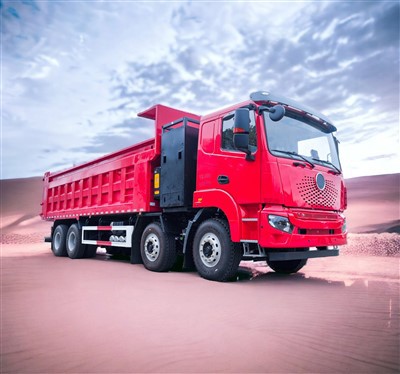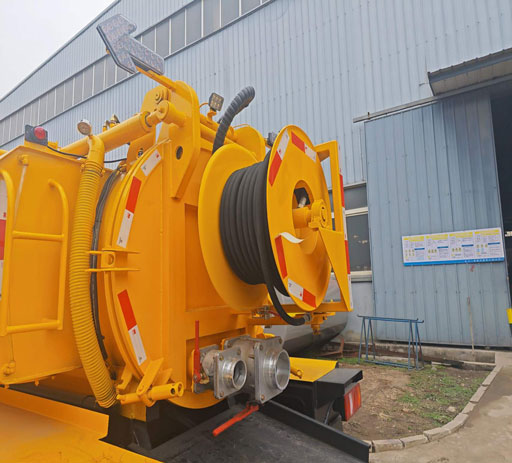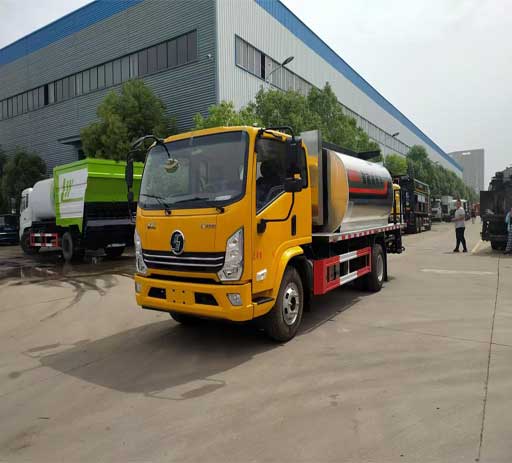Everything You Need to Know About Rear Lift Trucks
Introduction
Rear lift trucks have become essential tools in various industries, from construction to warehousing. Their innovative design allows for efficient lifting, moving, and loading of heavy materials, making them indispensable for any business that requires heavy lifting. In this article, we will explore the different types of rear lift trucks, their uses, maintenance, and advantages, as well as tips for operating and selecting the right one for your needs.
Understanding Rear Lift Trucks
What is a Rear Lift Truck?
A rear lift truck is a type of material handling equipment that is specifically designed to lift and move heavy loads. Unlike traditional forklifts, which may lift from the front, rear lift trucks are equipped with a lifting mechanism located at the back of the truck. This design provides better visibility and stability, especially when maneuvering in tight spaces.
Types of Rear Lift Trucks
There are several types of rear lift trucks available on the market, each suited to different applications:
- Electric Rear Lift Trucks: These are battery-powered and ideal for indoor use, offering low emissions and quiet operation.
- Diesel Rear Lift Trucks: Typically used for outdoor applications, these trucks provide greater power and are ideal for rough terrain.
- LPG Rear Lift Trucks: Running on liquefied petroleum gas, these trucks offer versatility for both indoor and outdoor use, balancing power and emissions.
- Manual Rear Lift Trucks: Operated by hand, these are often used in smaller warehouses and retail environments where electric or fuel-powered trucks may be overkill.

Core Components of Rear Lift Trucks
Understanding the essential components can help users operate rear lift trucks more effectively:
- Lifting Mechanism: Responsible for raising and lowering loads, this can include hydraulic systems and chains.
- Chassis: The frame of the truck that supports all other components and provides stability while in motion.
- Wheels: Designed to allow for smooth movement, different types may be used for indoor or outdoor surfaces.
- Operator Controls: Usually positioned near the operator’s seat, these controls allow for easy management of the truck’s functions.
Advantages of Rear Lift Trucks
1. Enhanced Visibility

One of the primary benefits of rear lift trucks is their enhanced visibility. The rear lift design allows operators to see the load and their surroundings more clearly, reducing the risk of accidents.
2. Increased Stability
Rear lift trucks are designed for better weight distribution. This stability minimizes the risk of tipping over, especially when carrying heavy loads.
3. Versatility
Rear lift trucks can effectively operate in various environments, from warehouses to construction sites. They can navigate narrow aisles and tight spaces with ease.
4. Improved Maneuverability
With the lifting mechanism at the rear, these trucks can turn more sharply and efficiently than traditional forklifts, allowing for greater productivity.
Operating a Rear Lift Truck: Best Practices
1. Pre-Operation Inspection
Before operating a rear lift truck, it’s crucial to conduct a pre-operation inspection. Check the following:
- Fluid levels (oil, hydraulic fluid)
- Tires for proper inflation and condition
- Lift mechanisms for any signs of wear or damage
- Safety equipment (horn, lights, etc.)
2. Training and Certification
To safely operate a rear lift truck, thorough training and certification are mandatory. Look for programs that cover:
- Proper maneuvering techniques
- Load handling and balancing
- Emergency procedures
3. Load Weight and Distribution
Always check the weight capacity of the rear lift truck and ensure loads are evenly distributed to maintain stability. Never exceed the weight limit as it can lead to accidents and equipment damage.
4. Using Safety Devices
Rear lift trucks often come equipped with safety devices such as seat belts, warning lights, and alarms. Always use these devices to protect yourself and those around you.
Maintenance of Rear Lift Trucks
Monthly Maintenance Checks
Regular maintenance is crucial for the longevity and safety of rear lift trucks. Monthly checks should include:
- Inspecting hydraulic lines for leaks
- Lubricating moving parts
- Checking battery health for electric models
Annual Professional Servicing
In addition to regular inspections, it’s wise to have professional servicing annually to ensure all systems are functioning correctly and to perform any necessary repairs.
Common Maintenance Issues
| Maintenance Issue | Potential Solution |
|---|---|
| Hydraulic leaks | Replace seals or hoses. |
| Worn tires | Replace tires to ensure traction. |
| Battery issues | Check connections and replace old batteries. |
Selecting the Right Rear Lift Truck
Consider Your Needs
Before purchasing or renting a rear lift truck, consider the following:
- Typical load weight and dimensions
- Frequency of use (daily vs. occasional)
- Operating environment (indoor vs. outdoor)
Evaluating Brand and Model Options
Research various brands and models to find the best truck that meets your needs. Look into:
- Reputation for reliability
- Warranty and service options
- Availability of replacement parts
Test Driving Options
If possible, test drive potential options. Assess performance aspects such as:
- How easy it is to operate
- The responsiveness of controls
- Overall comfort and ergonomics
Cost and Budgeting for Rear Lift Trucks
Initial Purchase Costs
The price of rear lift trucks can vary widely based on brand, model, and specifications. On average, you can expect to pay between $10,000 and $50,000 for new equipment, while used trucks may cost significantly less.
Operational Costs
Consider ongoing costs such as:
- Fuel costs for diesel or LPG models
- Electricity costs for battery charging
- Maintenance and repair costs over time
Renting vs. Buying
Depending on your needs, consider whether renting or buying makes more sense. Renting allows flexibility and lower upfront costs, while purchasing can be more economical for long-term use.
Real-World Applications of Rear Lift Trucks
1. Warehousing and Distribution
In warehouses, rear lift trucks are often used for stacking and retrieving pallets, enabling efficient inventory management.
2. Construction Sites
Construction companies utilize rear lift trucks to transport heavy materials like bricks, concrete bags, and tools across job sites, ensuring timely project completion.

3. Retail Operations
In retail, especially during deliveries, rear lift trucks can assist in moving stock quickly and safely from delivery trucks to storage areas.
Frequently Asked Questions (FAQ)
1. What is a rear lift truck mainly used for?
Rear lift trucks are primarily used for lifting, moving, and transporting heavy loads in various industrial settings, including warehouses and construction sites.
2. How can I ensure the safety of operating a rear lift truck?
Operators should receive proper training, perform daily safety checks, use safety devices, and follow operating guidelines to ensure a safe working environment.
3. What maintenance is required for a rear lift truck?
Regular maintenance includes daily inspections, fluid level checks, tire maintenance, and periodic professional servicing to ensure optimal performance.
4. Are rear lift trucks environmentally friendly?
Electric rear lift trucks are an eco-friendly option as they produce no emissions. However, diesel and LPG models are less environmentally friendly but are still widely used for their power capabilities.
5. How do I choose the right rear lift truck for my business?
Assess your specific needs, evaluate different brands and models, consider your operating environment, and factor in your budget.
6. Can rear lift trucks operate in tight spaces?
Yes, rear lift trucks are designed to maneuver easily in tight spaces, making them suitable for environments like warehouses with narrow aisles.
